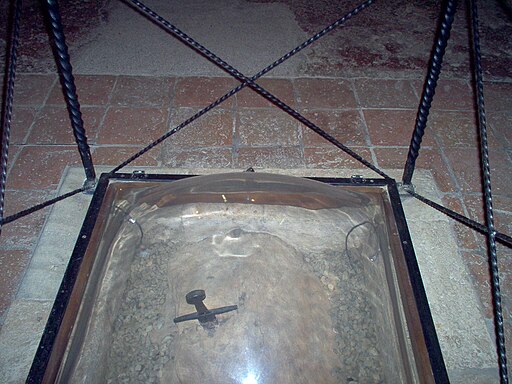
Galgano lived during the period when the first formalized canonization process was being put into place, and thus, when he was canonized a few years after his death, he was one of the first to go through that process. For that reason we know more about his actual life than we probably would have otherwise known. (The earlier default process, by long local veneration, has many advantages, but, unlike the formal process often lets historical traces fade into the mists of legend.) When in the nineteenth century it became fashionable to be preemptively skeptical of legends like St. Galgano's -- i.e., not merely recognizing them as stories with accumulation and occasionally transformation, misunderstanding, and assimilation to other stories, but treating them as active fictions made up whole cloth unless it can be shown otherwise -- the sword was often assumed to be a modern forgery; but the sword is indeed medieval, and the basic story goes back almost to the life of St. Galgano himself. Were the sword to have vanished, people would doubtless now regard it as pure fiction; but, whatever one's explanation of how it got there, there actually is a sword in the stone.